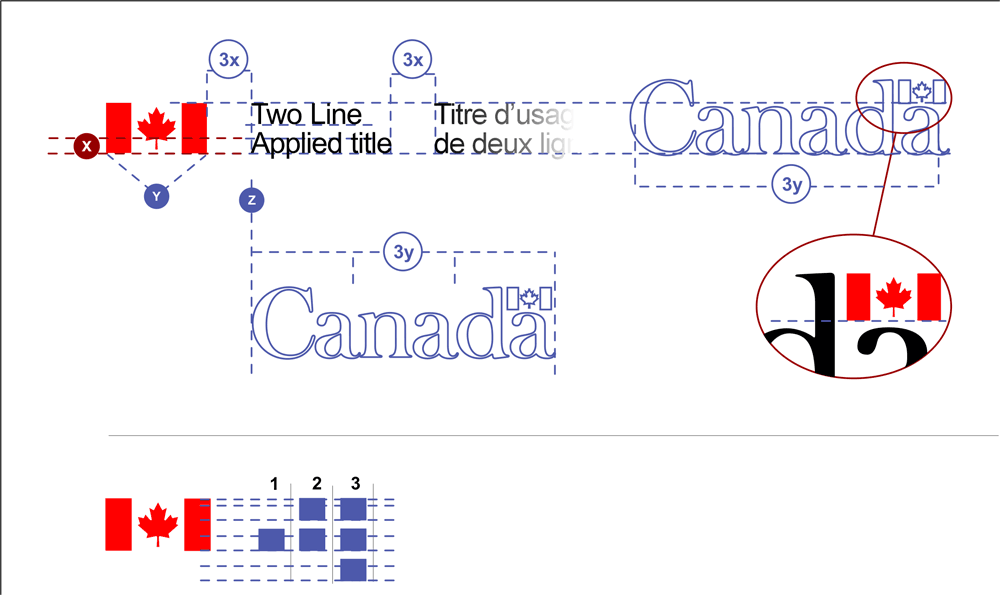It’s an admirable motto: “Visible government = accessible government = accountable government,” one adopted by the program overseeing federal branding. Try finding out much about it, though, and you’ll soon hit a brick wall.

The Federal Identity Program (colloquially called “FIP” among bureaucrats familiar with the program) was established in 1970 to develop and maintain the integrity of Canadian emblems like the coat of arms, the flag symbol and the Canada wordmark — all familiar sights that help Canadians know when they’re looking at something belonging to the feds whether it’s a GST cheque, passport, income tax form, or the now-retired Canadarm.
But there’s apparently a rebellious underbelly in the federal ranks of institutions wanting to stand out from the crowd.

Global News recently obtained years worth of emails and a PowerPoint presentation pertaining to the Federal Identity Program through access-to-information legislation (where the “visible, accessible, accountable” tagline is printed on the first slide). The presentation was prepared by Treasury Board, the department responsible for setting guidelines around the program and offering guidance to federal departments and agencies.
“FIP is under constant challenge from institutions trying to distinguish themselves through unique identifiers, logos, symbols and entirely separate identities,” read one email detailing talking points to go along with the PowerPoint presentation. “This fractures the government’s identity, weakens the public’s ability to recognize federal institutions and access federal program.”
Later in the presentation, a slide explains how managing symbols and logos that don’t comply with the program is an “ongoing, government-wide issue … Non-FIP symbols can be expensive. They require approval of Treasury Board ministers.”
Even though those statements were from when the Conservatives first took office, I couldn’t see two statements — one about the constant challenges to the program and another about how those challenges can become expensive — without wanting to know more.
So I sent in another access-to-information request, this time asking for records dating back a couple of years regarding exemptions granted under the Federal Identity Program. I wanted to see just how often institutions ask to be freed of the traditional federal branding and, more importantly, how much that process costs Canadians.
As it turns out, we’re not privy to that information. All submissions to Treasury Board and all decisions are considered cabinet confidence, one of the Access to Information Act’s big gaps.
As the Department of Justice describes it, cabinet confidences are, “in the broadest sense, the political secrets of ministers individually and collectively, the disclosure of which would make it very difficult for the government to speak in unison before Parliament and the public.”
Surprisingly, the program touted as promoting an accessible and accountable government, is shrouded in secrecy, near impossible to get detailed information about.
An informal request to Treasury Board President Tony Clement’s office — asking whether the government indeed has a program “under constant challenge” that can cost taxpayers money but whose administrators won’t disclose certain details — produced some particulars, though nothing specific about the frequency, details and costs associated with institutions looking to distinguish themselves.
“There are internal pressures related to identifying programs, services, initiatives and priorities which are an inherent part of managing any large corporate identity in the public or private sector,” the minister’s spokeswoman wrote in an email.
She went on to explain exemptions are sometimes deemed to be either in the government’s interests or an “operational necessity,” and often relate to using an additional symbol such as the Vancouver 2010 Olympics logo added to some government communications during the games.
- Trudeau says ‘good luck’ to Saskatchewan premier in carbon price spat
- Canadians more likely to eat food past best-before date. What are the risks?
- Hundreds mourn 16-year-old Halifax homicide victim: ‘The youth are feeling it’
- Vacation death: Cuba apologizes after Canadian family receives wrong remains




Comments